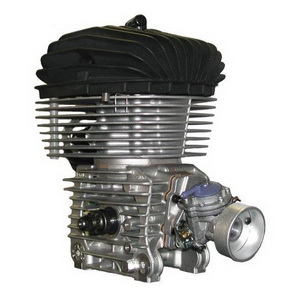
Resources
- Home
- About Air Cooling Systems
- Air Conditioner Pre Cooling System
- Air Cooling System
- Air Cooling System Design
- Air Cooling System In Automobiles
- Air Cooling System Reviews
- Air Cooling Systems FAQs
- Air Cooling Systems For Homes
- Air Cooling Systems For Offices
- Air In Cooling System Symptoms
- Car air Cooling System
- Car Air Cooling System
- Compressed Air Cooling System
- Cooling Air System
- Engine Air Cooling System
- Forced Air Cooling System
- Forced Air Heating And Cooling System
- Gas Turbine Inlet Air Cooling System
- How Do Air Cooling Systems Work
- Simple Air Cooling System
- Types Of Air Cooling Systems
- Underground Air Cooling System
- Where To Buy An Air Cooling System
Air Cooling System
The primary function of the air cooling systems is to maintain the ideal temperature levels of the engine and prevent overheating. This is achieved by heat transfer through the process of conduction. However, the overall process that occurs within the air cooling systems addresses other related aspects of the engine operation.
By its nature, engines need heat in order to perform at optimum levels. The moving and essential components of the engine are subjected to intense friction, and at low temperature levels, these parts tend to wear out easily. This leads to inefficient operation as the part of the chemical energy is converted into waste heat energy, due to friction, instead of mechanical energy, which is need in propeling the engine.
Air Cooling Systems and Engine Overheating
In order to achieve optimal engine operation, it is essential that the required operating temperature level is achieved within the shortest possible time. The air cooling systems should maintain the temperature of the engine within these ideal levels. Serious damage or meltdown may occur if the air cooling systems fail and the engine overheats. Air cooling systems are essential as engines running at excessively high temperatures tend to incur significant damage to the moving parts and surfaces that are subjected to friction.
High temperatures of engines also affect their lubrication. The continual and precise explosion of gas vapors within the engine chamber generates intense heat with temperatures exceeding the engine part’s melting temperature. If it gets extremely hot, it can set fire to the engine’s lubricants.
Internal Combustion and Engine Air Cooling Systems
The engine attains temperature levels that can set-off instantaneous and continuous combustion as fuel is vaporized once it enters the internal combustion chamber of the engine. The firing timing and sequence are preset for the engine’s cylinder shafts. Part of the chemical energy is converted into heat energy, which is expelled through the exhaust system. However, part of this generated heat is absorbed by the engine block, and this is moved by the air cooling system through the conduction process and released to the external environment. Without the air cooling system, the engine will continuously heat up and reach high levels of temperature which can cause total breakdown.
There are 3 critical conditions that should be maintained by the air cooling systems:
- The combustion chambers of the engine must reach the required level of temperature so that it can instantaneously vaporize the fuel as it is introduced into the engine cylinder. This reduces gas emissions and promotes better internal combustion.
- The lubricant used in the engine has a relatively low level of viscosity. At the right level of temperature, the engine will not be impeded by the lubrication and parts move more freely. This means that the engine is able to generate an optimum level of energy.
- At the ideal temperature levels, there is a marked reduction in the wear and tear of critical components of the engine.
There are two essential aspects of the air cooling systems that we must take into consideration. The processes that occur within the system ensure that the engine immediately achieves the operating temperature level and keep the temperature from reaching critical levels. It will also prevent engine breakdown and damage to essential engine parts.
